The clays, micas, chlorites, and serpentines, are all part of the sheet silicate group. They share strong similarities in their physical properties due to that structure. They make up an important set of economically important materials.
They are made up of sheets of silicates covalently bonded and held together by a series of cations such as Al+3, Mg+2, and Fe+2. The sheets are very strong, but the bonding holding them together is relatively weak. The weakness is their most important and useful feature.
The clay minerals are manly made up with Al+3 as the gluing material. Being a small cation, the layers are less likely to part via physical force, but can easily be expanded by water. Because the clays already have a good deal of water in their structure in the form of (OH). The clay minerals are used in building and sculpting.
kaolinite: Al4Si4O10(OH)8
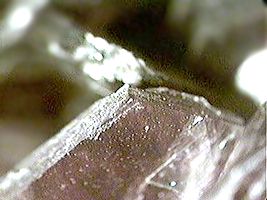
The micas are held together by Al+3 and K+, and produce minerals with even less strength between the silica sheets. They often form book-like structures that are easily separated.
Mica grows to a very large size in some environments, and has been used as window material in both Russia and the United States. Before the advent of glass, mica was used in the west in pioneer homes as a form of window pane.
muscovite: KAl2(Si3Al)O10(OH)2
biotite: K(Mg,Fe)3(Si3Al)O10(OH)2
Muscovite is light colored and biotite is dark brown to black.
The chlorite group has the general formula:
chlorite: (Mg,Fe,Al)6(Si,Al)4O10(OH)8
The name comes from the greek word (chloros) meaning green and not the element chlorine. Chlorite is the alteration product formed when many of the Fe and Mg (MaFec) minerals come in contact with sea water. It is one of the materials that helps in the melting of the oceanic crust during subduction.
The serpentine group is made up of three minerals that share the formula ...
Mg6Si4O10(OH)8
One member was a very important economic material until it was discovered that it caused cancer. Chrysotile is the infamous mineral used in the creation of asbestos. It is a fibrous material with excellent heat resistance.
KAl2(Si3Al)O10(OH)2
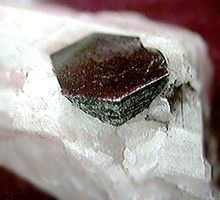
K(Mg,Fe)3(Si3Al)O10(OH)2
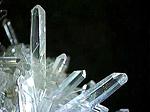
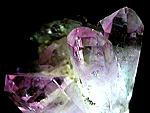
Quartz is the only mineral made of pure silica. Quartz has more than one crystal form, and it is dependent upon the environment under which it is formed.
The formula for quartz is usually written SiO2 but it should be (SiO2)n where the n represents multiple units.
Normally quartz forms six sided crystals and it can form in many colors. Purple quartz is known as amethyst, yellow or orange quartz is called citrine, clear quartz is sometimes called rock crystal, and grey-brown quartz is called smoky.
Sometimes quartz precipitates in a very fine crystal structure and creates a very different look. The fine grained variety of quartz is called chalcedony, and there are sub-groups like agate, flint, and jasper.
Agate is banded, while flint and jasper may be solid or patterned but not tightly banded.
Quartz is also an economically important mineral and is used in high temperature fixtures, as a substrate for the glass industry, and in the electronics industry. It is used as an oscillator for timing. (remember quartz watches.)
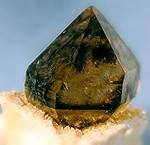
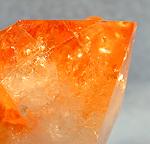

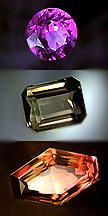
| NEXT | TOC | PREV |